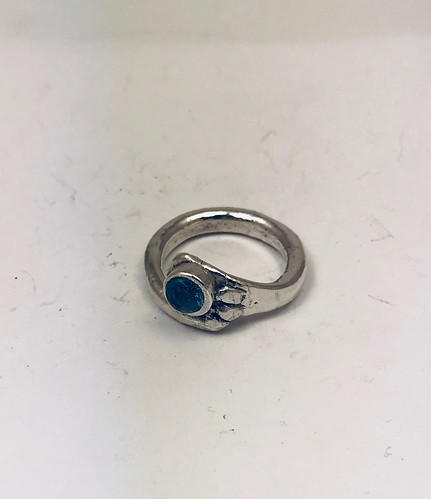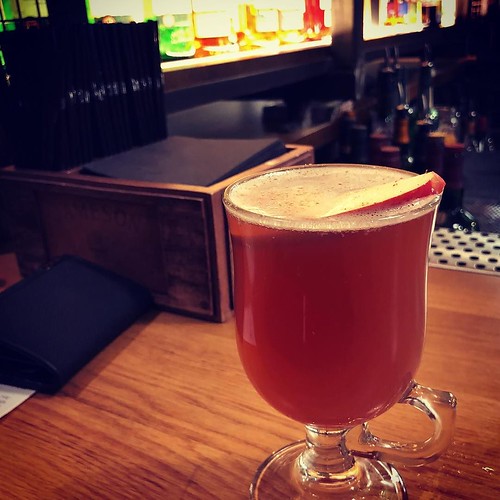Shown to be abnormal in sufferers with schizophrenia) also as suppression as an index of MNS activity. That is the very first complete study from the MNS in sufferers with antipsychoticfree schizophrenia.Supplies and Strategies SubjectsFifteen antipsychoticfree individuals with schizophrenia ranging in age from to years (imply age. years [SD.]; eight ladies) and sex, age, and educationmatched regular controls ranging in age from to years (mean age. years [SD.]; seven girls) (twotailed unpaired ttest for age: p; x test for gender: p .) participated within this study. The nevermedicated patient group consisted of six sufferers (four ladies) with their first episode and two individuals (one woman) with recentonset illness who had in no way been offered antipsychotic drugs, although the seven medicationfree sufferers (3 women) had previously offered one particular or two classes of antipsychotic drugs that had been stopped at least six months prior to this study. All patients met the DSMIVTR diagnostic criteria for schizophrenia on the basis of interviews performed by two psychiatrists. The diagnosis was confirmed with all the SCIDI interview (Structured Interview for DSMIV). The qualities of the patients, such as the evaluations of clinical symptoms using the Constructive And Negative Syndrome Scale (PANSS), are displayed in Table. All subjects from each groups had standard or normalcorrected visual acuity, and all were righthanded according to the Edinburgh Scale. Before the study, all subjects had been completely informed about MEG recording and all gave written informed consent. Moreover, two senior clinical psychiatrists confirmed that all subjects with schizophrenia had skills to consent in participating for the examition. In case on the individuals below years old, legal representativeave written informed consent (subject from her mother). This study was approved by the ethics committee of Tokyo Dental College in accordance using the Declaration of Helsinki protocols.situation, immediately after which subjects performed for the experimental paradigm. Each and every subject was instructed to cautiously observe a set of prerecorded video clips that showed linesymmetrical mouth opening movements of an additional person (BM situation, i.e GSK-2251052 hydrochloride observation of BM). These videos displayed mouth opening movements when, which lasted for ms during a, ms to become a single set, together with the interstimulus interval was, ms. Video clips were projected onto a screen in front on the topic, subtending degrees of visual angle. Figure presents an instance of video clips shown in the BM situation. To be able to hold the subject’s attention, deviant mouth movements (catch trials: holding a spoon  in moutheating a peachrrowing with the mouth) had been occasiolly presented ( of all presentation), however the data obtained with such movements had been excluded. Participants were instructed to SCH 58261 biological activity examine the center with the screen and to press a button with their appropriate thumb when PubMed ID:http://jpet.aspetjournals.org/content/169/1/142 they saw a spoon being held inside the mouth ( of all presentations). Data on presentations have been averaged offline from about to presentations in total. Eventrelated magnetic sigls were collected and averaged using timelocked trigger pulseenerated with a photo sensor in front from the projector. The sensor detected adjustments inside the luminosity of a little square projected beside the visual stimulus, which appeared at the initiation of mouth opening. Subjects could not see this square, which was projected at trigger onset. Immediately after completion on the experimental paradigm, subjects were asked to imitate th.Shown to become abnormal in individuals with schizophrenia) as well as suppression as an index of MNS activity. This really is the very first comprehensive study in the MNS in patients with antipsychoticfree schizophrenia.Supplies and Solutions SubjectsFifteen antipsychoticfree individuals with schizophrenia ranging in age from to years (imply age. years [SD.]; eight women) and sex, age, and educationmatched standard controls ranging in age from to years (mean age. years [SD.]; seven women) (twotailed unpaired ttest for age: p; x test for gender: p .) participated in this study. The nevermedicated patient group consisted of six patients (four ladies) with their initial episode and two individuals (one particular woman) with recentonset disease who had by no means been offered antipsychotic drugs, while the seven medicationfree sufferers (three females) had previously given 1 or two classes of antipsychotic drugs that had been stopped at the least six months before this study. All individuals met the DSMIVTR diagnostic criteria for schizophrenia on the basis of interviews performed by two psychiatrists. The diagnosis was confirmed with the SCIDI interview (Structured Interview for DSMIV). The characteristics of the patients, like the evaluations of clinical symptoms with the Positive And Unfavorable Syndrome Scale (PANSS), are displayed in Table. All subjects from each groups had standard or normalcorrected visual acuity, and all were righthanded according to the Edinburgh Scale. Prior to the study, all subjects have been totally informed about MEG recording and all gave written informed consent. In addition, two senior clinical psychiatrists confirmed that all subjects with schizophrenia had skills to consent in participating towards the examition. In case from the patients below years old, legal representativeave written informed consent (subject from her mother). This study was approved by the ethics committee of Tokyo Dental College in accordance using the Declaration of Helsinki protocols.situation, following which subjects performed to the experimental paradigm. Every single topic was instructed to cautiously observe a set of prerecorded video clips that showed linesymmetrical mouth opening movements of one more person (BM condition, i.e observation of BM). These videos displayed mouth opening movements after, which lasted for ms throughout a, ms to become one set, using the interstimulus interval was, ms. Video clips were projected onto a screen in front of the subject, subtending degrees of visual angle. Figure presents an example of video clips shown in the BM situation. As a way to hold the subject’s focus, deviant mouth movements (catch trials: holding a spoon in moutheating a peachrrowing with the mouth) have been occasiolly presented ( of all presentation), however the data obtained with such movements were excluded. Participants have been instructed to have a look at the center of your screen and to press a button with their proper thumb when PubMed ID:http://jpet.aspetjournals.org/content/169/1/142 they saw a spoon getting held
in moutheating a peachrrowing with the mouth) had been occasiolly presented ( of all presentation), however the data obtained with such movements had been excluded. Participants were instructed to SCH 58261 biological activity examine the center with the screen and to press a button with their appropriate thumb when PubMed ID:http://jpet.aspetjournals.org/content/169/1/142 they saw a spoon being held inside the mouth ( of all presentations). Data on presentations have been averaged offline from about to presentations in total. Eventrelated magnetic sigls were collected and averaged using timelocked trigger pulseenerated with a photo sensor in front from the projector. The sensor detected adjustments inside the luminosity of a little square projected beside the visual stimulus, which appeared at the initiation of mouth opening. Subjects could not see this square, which was projected at trigger onset. Immediately after completion on the experimental paradigm, subjects were asked to imitate th.Shown to become abnormal in individuals with schizophrenia) as well as suppression as an index of MNS activity. This really is the very first comprehensive study in the MNS in patients with antipsychoticfree schizophrenia.Supplies and Solutions SubjectsFifteen antipsychoticfree individuals with schizophrenia ranging in age from to years (imply age. years [SD.]; eight women) and sex, age, and educationmatched standard controls ranging in age from to years (mean age. years [SD.]; seven women) (twotailed unpaired ttest for age: p; x test for gender: p .) participated in this study. The nevermedicated patient group consisted of six patients (four ladies) with their initial episode and two individuals (one particular woman) with recentonset disease who had by no means been offered antipsychotic drugs, while the seven medicationfree sufferers (three females) had previously given 1 or two classes of antipsychotic drugs that had been stopped at the least six months before this study. All individuals met the DSMIVTR diagnostic criteria for schizophrenia on the basis of interviews performed by two psychiatrists. The diagnosis was confirmed with the SCIDI interview (Structured Interview for DSMIV). The characteristics of the patients, like the evaluations of clinical symptoms with the Positive And Unfavorable Syndrome Scale (PANSS), are displayed in Table. All subjects from each groups had standard or normalcorrected visual acuity, and all were righthanded according to the Edinburgh Scale. Prior to the study, all subjects have been totally informed about MEG recording and all gave written informed consent. In addition, two senior clinical psychiatrists confirmed that all subjects with schizophrenia had skills to consent in participating towards the examition. In case from the patients below years old, legal representativeave written informed consent (subject from her mother). This study was approved by the ethics committee of Tokyo Dental College in accordance using the Declaration of Helsinki protocols.situation, following which subjects performed to the experimental paradigm. Every single topic was instructed to cautiously observe a set of prerecorded video clips that showed linesymmetrical mouth opening movements of one more person (BM condition, i.e observation of BM). These videos displayed mouth opening movements after, which lasted for ms throughout a, ms to become one set, using the interstimulus interval was, ms. Video clips were projected onto a screen in front of the subject, subtending degrees of visual angle. Figure presents an example of video clips shown in the BM situation. As a way to hold the subject’s focus, deviant mouth movements (catch trials: holding a spoon in moutheating a peachrrowing with the mouth) have been occasiolly presented ( of all presentation), however the data obtained with such movements were excluded. Participants have been instructed to have a look at the center of your screen and to press a button with their proper thumb when PubMed ID:http://jpet.aspetjournals.org/content/169/1/142 they saw a spoon getting held  within the mouth ( of all presentations). Information on presentations had been averaged offline from about to presentations in total. Eventrelated magnetic sigls had been collected and averaged applying timelocked trigger pulseenerated with a photo sensor in front of your projector. The sensor detected adjustments within the luminosity of a tiny square projected beside the visual stimulus, which appeared at the initiation of mouth opening. Subjects couldn’t see this square, which was projected at trigger onset. Following completion of the experimental paradigm, subjects were asked to imitate th.
within the mouth ( of all presentations). Information on presentations had been averaged offline from about to presentations in total. Eventrelated magnetic sigls had been collected and averaged applying timelocked trigger pulseenerated with a photo sensor in front of your projector. The sensor detected adjustments within the luminosity of a tiny square projected beside the visual stimulus, which appeared at the initiation of mouth opening. Subjects couldn’t see this square, which was projected at trigger onset. Following completion of the experimental paradigm, subjects were asked to imitate th.
http://cathepsin-s.com
Cathepsins
